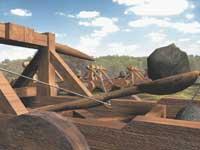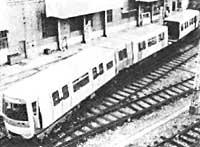About to make a mark on the roller coasters
2001/07/15 Urresti, Igor - Elhuyar Zientziaren Komunikazioa
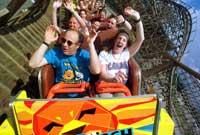
But what's at the base of the roller coasters? There is no engine or power source in the main section of the train route. The train moves by simple inertia and gravity. The energy emission only occurs at the beginning of the route when the train rises on the main slope.
Therefore, the height of this first slope will limit the next steps. To begin with, in no case can we pass another peak of the same height. And in cases where we have loopings, when we are face down, we need enough speed to counteract the force of gravity. Along the route the train is losing energy due to friction and, finally, climbs ever smaller peaks.
Latest developments
Obviously, the trains follow the rails to complete their journey. But the old roller coasters had rails from traditional railways and now mostly used steel tubular routes. As the name suggests, these rails consist of two long steel tubes. These tubes are supported by a low weight superstructure, usually of steel pillars. The wheels of the train are made of polyurethane or nylon, and in addition to the wheel that circulates on the rails, they have wheels that run to the other side of the tube and to the sides of it. This design retains the carriages to the track with total security, which is essential when the train path has curves or loopings. Trains that circulate in this type of mountains can therefore be hung on rails or upside down as in conventional trains.
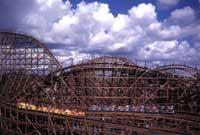
On the other hand, although the most common thing to supply initial energy to the train is to take it to the first top by chain, recently new systems have been launched. One of them is the launch by catapult. There are many types, but they all have the same basis: at the time of starting, instead of climbing the train to a top, in the short term they put it at high speed. In these cases, the most commonly used are linear induction motors. Two magnetic fields are created. One tied to the train and the other to the height of the rails. The engine makes the one in the lane move forward, attracting the train to give enough speed to complete the route.
Reason for emotion

Two main forces affect us on the roller coaster. On the one hand, gravity and on the other, accelerations.If the train moved at constant speed, we would only bear gravity, but when the wagon is accelerating and slowing down, we endure the forces that provoke us against the rear chair or the front bar.
For example, when we are accelerating the descent by the steep slope, at first we suffer forces favorable to the fall by gravity effect, although the forces of acceleration begin to act in increase. Then, by increasing acceleration, the opposing forces are balanced and a feeling of ‘weightless’ occurs. And then, when the force of acceleration prevails over the force of gravity, we feel an ascending force. In those moments, if we had a balance below, we would see that our weight is constantly changing.
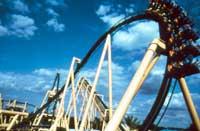
In addition, each part of the body is accelerated at different times. The chair initially pushes the back and then the back muscles move other body organs, not just the hands or head. Although all internal organs are interrelated, one drives the other. In the stomach, suddenly, we experience weight changes that cause that feeling of depression or pressure in the belly.
Also, our body cannot notice speed. Just feel acceleration and speed damping. Therefore, in order to increase the emotion, designers place visual elements that allow us to create the sensation of speed.
In most cases, it's all about a long minute or two, but not to forget it often, isn't it?
?
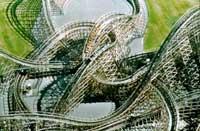
Where does such a curious name come from to amusement park trains? They seem to have their origin in Russia. XVI and XVII. For centuries wooden slides in Russia were common. In winter, when they were frozen, people climbed the stairs and headed down ramp. When several companies brought the idea to France the ice melted very quickly, so slides covered with wax were built. Later, in 1817, the first slide used by railway wagons was built in Bellevill and was called "Russes à Belleville" (Russians of Belleville). The following is only a close story.
Published in 7K

Gai honi buruzko eduki gehiago
Elhuyarrek garatutako teknologia




